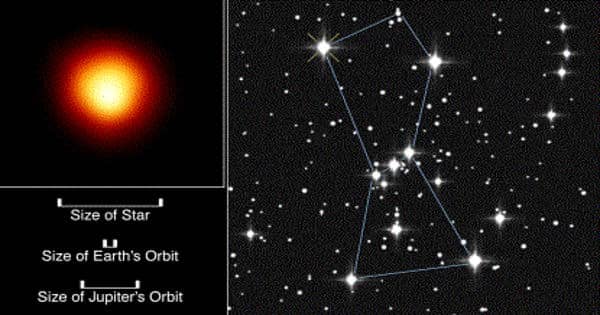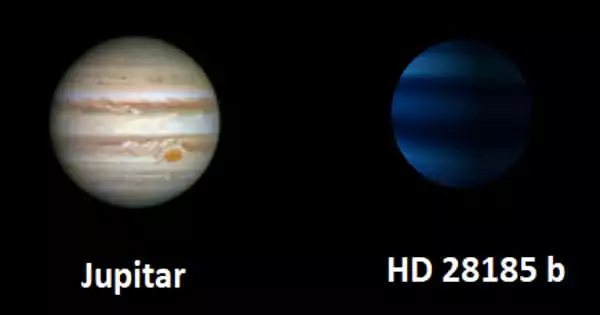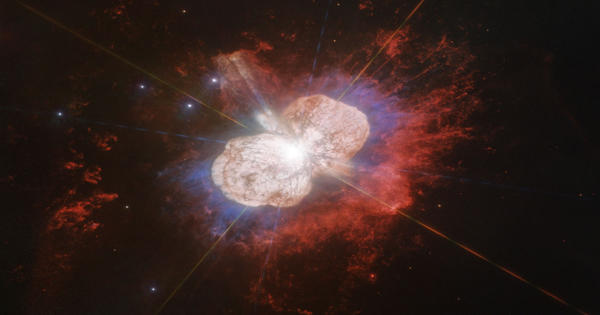Antares (α Scorpii) is a red supergiant star in the Milky Way galaxy and the sixteenth brightest star in the nighttime sky. It is a member of the Upper Scorpius subgroup of the association, which contains thousands of stars with a mean age of 11 million years, about 170 parsecs (550 ly) from Earth. It is listed as 15th or 16th brightest, depending on how the two brighter components of the Capella quadruple star system are counted. Distinctly reddish when viewed with the naked eye, Antares is a slow irregular variable star that ranges in brightness from apparent magnitude +0.6 to +1.6.
Antares is about 604 light-years from Earth. It is 700 times the sun’s diameter, large enough to engulf the orbit of Mars, if the solar system were centered on it. According to NASA, the star has eaten all its hydrogen and is now shining because it is fusing progressively heavier elements.
Antares is the brightest and most massive star in the Scorpius-Centaurus Association. It appears as a single star when viewed with the naked eye, but it is actually a binary star, with its two components called α Scorpii A and α Scorpii B. The Scorpius-Centaurus Association contains thousands of stars with a mean age of 11 million years. The brighter of the pair is the red supergiant, while the fainter is a hot main-sequence star of magnitude 5.5. Antares has a secondary, or companion star, Antares B. The orbit of the companion star and its properties are not properly known, with an estimated period of 1,200 to 2,562 years.
- Apparent Magnitude: 1.06
- Distance from Earth: 550 light-years
- Type: Red supergiant of type M0.5Iab
- Color: Red
- Mass: ~12 M☉
- Radius: ~700 R☉
- Constellation: Scorpius
- Right Ascension: 16h 29m 24s
- Declination: -26° 25′ 55”

Antares is visible all night around May 31 of each year, when the star is at opposition to the Sun. If you look southward in early evening from late spring to early fall, you’re likely to notice the fishhook pattern of Scorpius the Scorpion, with ruby Antares at its heart. Antares then rises at dusk and sets at dawn as seen at the equator. If you traveled to the Southern Hemisphere – from about 67 degrees south latitude – you’d find that Antares is circumpolar, meaning that it never sets and is visible every night of the year from Earth’s southernmost regions.
Antares has a radius of about 680 to 800 times that of the Sun. This gives Antares a diameter between 947 to 1.114 billion kilometers in size. It is truly an enormous star, with a radius in excess of three astronomical units (AU). One AU is the Earth’s average distance from the sun. If Antares was placed in the center of our solar system, its outer surface would lie between the orbits of Mars and Jupiter, in the asteroid belt.
Antares is about 550 light-years (or 170 parsecs) from the Earth. Its visual luminosity is about 10,000 times that of the Sun. Antares’ surface temperature is relatively low, Antares’ tremendous surface area – the surface from which light can escape – makes this star very bright. Because the star radiates much of its energy in the infrared part of the spectrum, the bolometric luminosity is about 65,000 times that of the Sun. The mass of the star is in the range of 15 to 18 solar masses.
Antares is one of the first red supergiants to be directly imaged. Antares is often compared to other red supergiants of its type, so that scientists can better understand how these stars are structured and under what conditions they will eventually become supernovas.
Information Source:
















